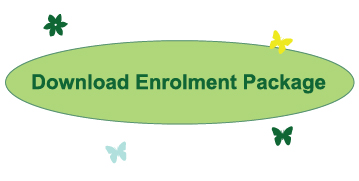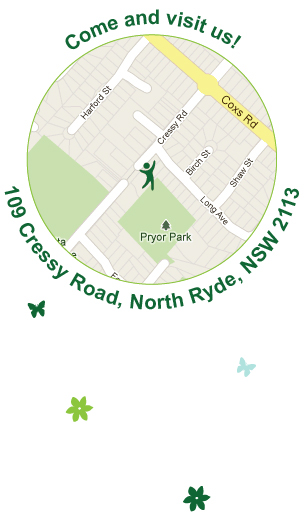Frequently Asked Questions
 If you have questions that are not answered below please contact us for more information.
If you have questions that are not answered below please contact us for more information.
How does Montessori differ from mainstream pre-schools in New South Wales?
Montessori is a particular style or pedagogy of education. It differs from mainstream pre school education in the following ways;
- There is a 3 year age range in the classroom that centres on the individual needs of children, whilst allowing the child to interact with children of different ages forming a mentor style relationship. This mixing of ages is an important part of the environment as the younger ones learn from watching the older ones, who in turn benefit from helping the younger ones – the basis of community life.
- Teachers are called ‘directors/resses’ because their role is not to teach but to guide and facilitate children in the process of learning.
- The Montessori learning materials are specific to such pre-primary classrooms.
- Unique arrangement of 5 learning areas of the classroom – Practical Life, Sensorial, Language, Cultural, and Maths . Each piece of equipment has one specific aim/concept and is presented in a specific order. The Montessori classroom is child-centred but adult guided, structured but free-learning and emphasizes basics in an enjoyable, hands-on way.
- Once presented with a particular piece of equipment, children are free to choose that activity and repeat use of these materials whenever and how often they wish. Children choose their own cycle of activities from within the classroom (and not just what is available/put out on that day).
- Emphasis on calmness, order and beauty in the Montessori classroom. Each activity is carefully and attractively arranged so as to be inviting to the children. Children are part of the total care of this environment (i.e. cleaning, dusting, sweeping, washing dishes etc).
- Most learning is done independently (to encourage concentration and to gauge each child’s understanding of the concepts), sometimes there are small group lessons. Children work with the materials on their own, not groups of children sharing the same activity.
- The classroom is constant/static, all the same activities and areas of the classroom are in the same place thus providing security and familiarity (room arrangement is not changed daily or weekly) and everything the children need is always present. Small changes are made to particular activities in each of the areas eg. a change in an art/craft activity.
- All the materials/activities are always available and are attractively arranged on low shelves so that children can freely choose from them. Children work at a table or on a mat on the floor and return the activity to its place once they are finished. The children are part of the total care of their environment there is only “one” of each piece of material/activity, thus children learn to share because they have to wait until that activity is returned to its place on the shelf and not because of a designated number of seats available at a table.
- Children use real (not imitation) child-sized items/things eg. real jugs and glasses, small graters, knives, brooms, mops, etc and engage in real life activities eg. polishing wood/shoes/brass, preparing food and washing dishes, window washing etc.
Why do the children go every day to Pre School? And for only three hours a day?
There are several reasons for this structure of five half days. Preschool is the child’s work which he/she takes seriously and to which we must accord due importance. As well:
- Attending 5 days a week (initially half days) – maintains a sense of continuity for the children in many ways i.e. the same staff, the same children/friends attending, and opportunities to repeat/review and practice new concepts learnt without long breaks in between.
- For three to four year olds, three hours represents an optimal period of pre-school activities and for learning. Beyond this they are often tired and may need sleeps.
What happens when they finish extended day? Do they have problems fitting in to a mainstream school in year one?
The majority of our students go on to mainstream primary school into year one in various schools around the area. The local public and private school all accept children from the Montessori pre school. Some children go on to Montessori primary at either Balmain or Turramurra.
What happens to my Security deposit if I leave before the completion of three years?
The Security deposit is forfeited to the school if your child does not complete the three years. Because Montessori is a unique and complete three year programme, that builds on skills and knowledge, children cannot just slip into the programme for 6 months and then leave. Montessori does not enrol any child after the age of 4, (unless they are a transfer from another Montessori school and a vacancy exists in that age group)) so therefore if a child leaves that position it cannot be filled. A commitment to a three year program is essential from all families so that the younger three year olds have the benefit of a full compliment of 5 year olds to model their activities on, and the age, gender balance of the class is kept intact.
What if my child doesn’t turn three till July, do they have to wait till the beginning of next year to start?
Montessori staggers the start of each new child. Therefore as close as possible to their third birthday they are invited into the classroom, regardless of what time of year, during term time it is. For children with a June or July birthday, they often only get two and half years of the programme. The parents can then decide whether to put them into year one or into kindergarten in a mainstream school. Some children stay at the pre school another 6 months until they are 6 and then move onto their next school, which is usually the next stage of Montessori education (age 6 – 9).




